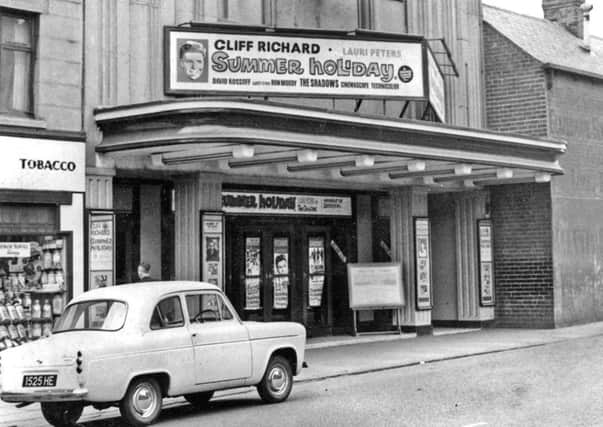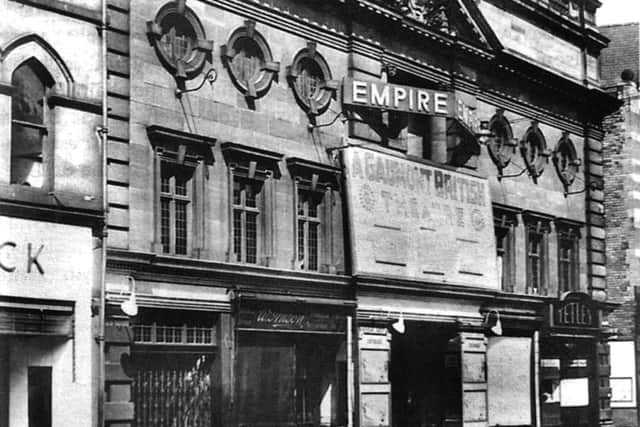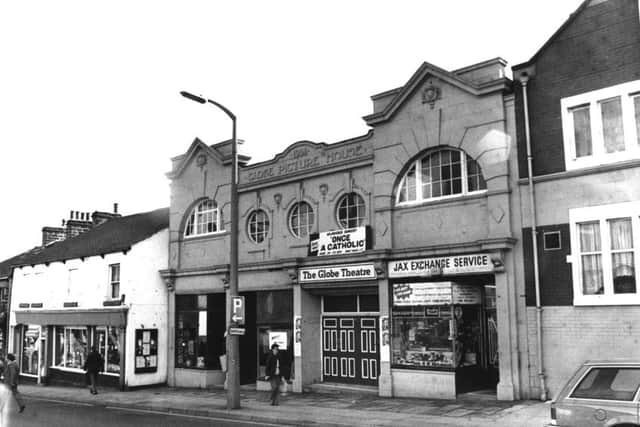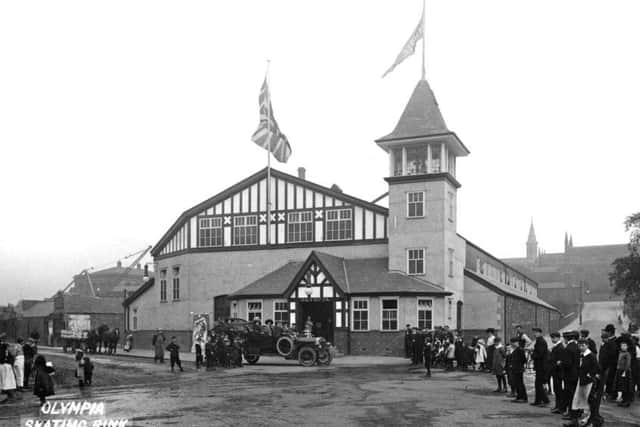Nostalgia on Tuesday: The age of cinema


Most likely, Barnsley folk saw their first moving pictures at Berzac’s Colonial Circus encamped at Town End in March, 1900. The films people saw on a ‘Bellascope’ may have included scenes of the Boer War.
The Hippodrome, Town End, opened by Alec Hurley and Harry Monkton as a variety theatre on March 2, 1903, first showed films on a regular basis, but closed around 1906.
Advertisement
Hide AdAdvertisement
Hide AdThe Harvey Institute/Public Hall on Eldon Street was opened on January 25, 1878 by the Barnsley Public Hall and Mechanics Institute company. A programme of animated pictures was advertised at the Public Hall in June 1907 and shown by Jasper Redfern, a film making pioneer born in Sheffield.


On September7,1907 an advertisement read: ‘For a short season only, commencing Monday, Sept 9 – Sydney Carter’s New Century Pictures’. Carter was at the forefront of this new form of entertainment and showed films at a variety of venues around the country.
The programme at the Barnsley Public Hall began every evening at 8pm and Saturday afternoon at 3pm Admission to the Public Hall was: stalls, 2s and 1s 6d; Balcony, 1s; Pit, 6d; Gallery, 3d.
During the remainder of 1907, the Public Hall presented a variety of entertainment to the Barnsley public as well as animated pictures. Tragically, the venue was the scene of a major disaster on Saturday, January 11 1908 when 16 children were killed and many others injured.
Advertisement
Hide AdAdvertisement
Hide AdThe World’s Animated Picture Company, had shown films and presented variety entertainment in the Public Hall. A special matinee performance for children was announced for Saturday afternoon.


Entertainment was scheduled to begin at 3pm, but children had assembled at least an hour before then, and when the doors were thrown open at 2.30pm, the children swarmed up the stairway, eager to find good places, and anticipating the delights of the picture show.
Quickly, the gallery was filled to capacity, yet there were hundreds more children crowding up the staircase. Those at the top were told that if they would go round to the main entrance they would be allowed to enter the pit at a reduced charge. It led to disastrous consequences. The pressure above from those trying to force their way back down the stairs was enough to bowl over smaller children near the bottom. Others stumbled over them, and there was soon a pile of children about four feet high on a small landing near the bottom of the stairs. Sixteen children were suffocated or trampled to death, and many others injured.
After this disaster, the Cinematograph Act was passed in 1909, the first primary legislation in the UK which specifically regulated the film industry. All commercial cinemas had to comply and each cinema had to be inspected and licensed by the local authority.
Advertisement
Hide AdAdvertisement
Hide AdIn the following years, Barnsley’s cinemas opened in purpose-built buildings, or in converted premises. Originally opening as the Olympia Skating Rink on 20 August 1909, the building was converted to the Pavilion Cinema with shows from December 1911. On the first week of operation the variety acts included ‘Pedro’ and ‘Anita’, performing twin chimpanzees. The pictures were changed on Mondays and Thursdays.


The Alhambra, built as a theatre, was opened on October 1, 1915 by Wentworth Woodhouse’s Countess Fitzwilliam, for the theatre’s owners the Alhambra Theatre (Barnsley) Ltd. Initially, the building seated 2,362 in the stalls and three balconies. The Alhambra supported live theatre until June 6, 1925 when it was converted to a cinema.
Barnsley’s first purpose-built cinema, the Barnsley Electric Theatre was opened in Eastgate by the London & General Electric Theatres on 11th March 1911. One report mentioned ‘the better class patrons who reside in the neighbourhood [are] especially catered for, while the general public are also given a cordial welcome, and a right good show’.
Another of Barnsley’s purpose-built cinemas was the Globe Picture House, which opened its doors at the beginning of September 1914. The first British ‘talkie’, Kitty, was shown there in November 1929.
Advertisement
Hide AdAdvertisement
Hide AdBy the late 1930s, several Barnsley cinemas had fallen by the wayside, including the Electric Theatre (1938) and the Oddfellows Hall or Cosy Cinema (May 1928).


The 1930s was also a period when some of the most impressive cinema buildings were erected in the Art Deco style. Barnsley’s Ritz Cinema fell into this category and showed films from March 22, 1937.
In subsequent years the following Barnsley cinemas closed: Alhambra, November 26, 1960; Britannia March 29, 1959; Globe Picture House, June 20, 1962; Princess Palace, September 29, 1956; Pavilion, September 26 1950; the Ritz (the ABC from 1961), March 16, 1974.
The Empire Palace, converted from a theatre to a picture house by the end of March 1920, had been renamed Gaumont Cinema on May 13, 1950 but was gutted by fire on January 2 1954. Firemen fought the blaze for over two hours. The estimated damage was over £50,000.
Advertisement
Hide AdAdvertisement
Hide AdThe Gaumont re-opened in February 1956, and was built to the designs of T.P. Bennett & Son. The building was re-named Odeon in 1962, closed on September 17 2005, only to re-open as the Parkway Cinema August 8, 2007. Today, this is Barnsley town centre’s only surviving link to its long, and on the one occasion tragic, cinema history.